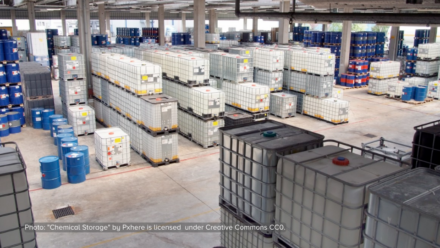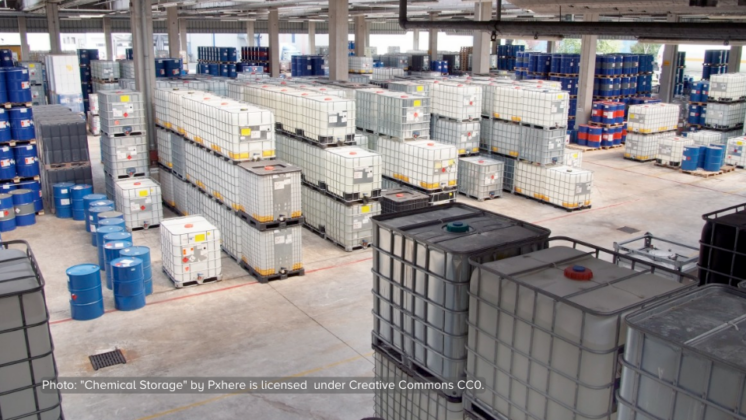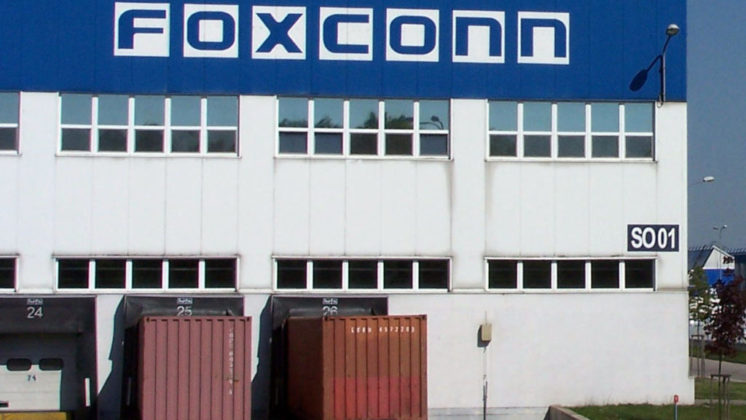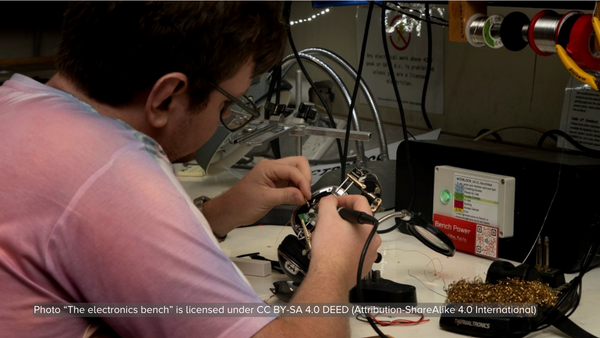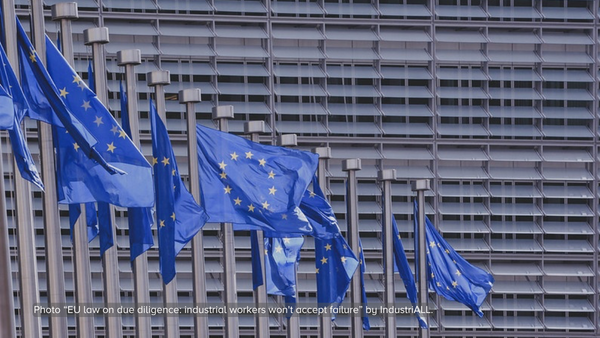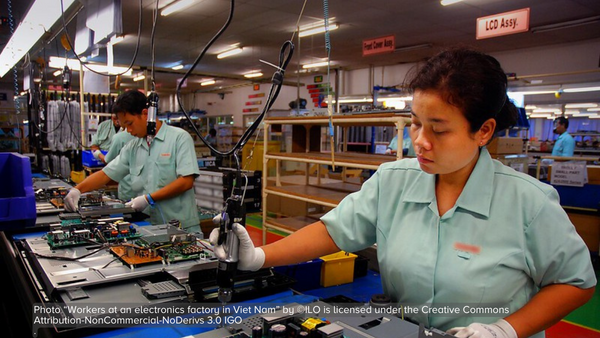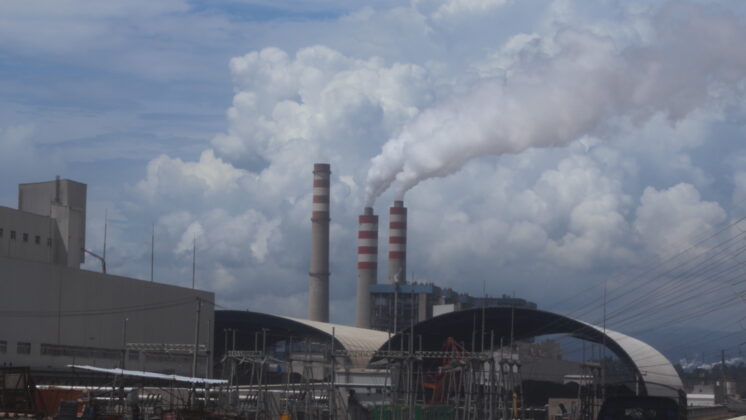For many of us, electronics are part of modern life – cell phones, laptops, TVs and a growing number of gadgets. Sadly, most of these electronics become obsolete or unwanted within one to three years of purchase. As a result, the pile of electrical and electronic waste (also known as e-waste) is growing rapidly. To address the negative impacts of e-waste trade, a number of global and regional waste trade treaties and other international instruments are in effect.
For many of us, electronics are part of modern life –
cell phones, laptops, TVs and a growing number of gadgets. Sadly, most of these
electronics become obsolete or unwanted within one to three years of purchase
and thus we buy new, updated equipment to support our needs and wishes. As a
result, the pile of electrical and electronic waste (also known as e-waste)[1] is growing rapidly.
The problem with e-waste is that it contains hazardous substances that can present risks to human health and the environment - such as lead, mercury and arsenic – and therefore require special dismantling and recycling methods. Generally, these methods are available in developed countries, however – due to high labour costs and strict environmental regulations - rich countries tend not to recycle their own e-waste. Very often, it is either land filled or (illegally) exported from developed countries to developing countries, where the infrastructure is lacking to manage e-waste in a responsible (environmentally sound) manner.[2] Instead, it is stripped down to components by hand with no consideration for health and safety. After the useful metals are taken out, leftover parts are often dumped in landfills or rivers, or simply burnt.[3] Such use of rudimentary techniques has adverse environmental and health implications and it is also less efficient in recovering valuable resources.[4] To address these – and other - negative impacts of e-waste trade, a number of global and regional waste trade treaties and other international instruments are in effect.
The Basel
Convention
One of the most prominent initiatives to regulate the international transboundary movement of hazardous waste is the Basel Convention adopted in 1989. The Convention has identified e-waste as hazardous waste[5] - despite exceptions – and developed a framework for controls on transboundary movement of such waste. The Convention has almost universal membership, with 180 parties by the start of 2013. The United States is the only OECD country that has not ratified the Basel Convention and remains – together with Haiti - only a signatory to the Convention.[6]
The Convention does not prohibit the trade of hazardous waste, it rather puts emphasis on the sovereign rights of states and it leaves them more or less free to interpret the provisions provided by it. Its objective is - in short - to protect human health and the environment against the adverse effects of hazardous wastes.
One of the key elements of the Basel Convention is the environmentally sound management (ESM) of waste. This means that transboundary waste movements are permissible only if they present the best solution from an environmental viewpoint. The general rule is that waste must be disposed of as close as possible to the source of generation, and export of hazardous waste (including e-waste) is permitted if there is no reason to believe that the wastes will not be managed in an environmentally sound manner in the destination country. However, before export may commence, the exporting state must inform the destination country of its intent to conduct trade in e-waste and the importing country has to give its consent with or without conditions.
There is also a number of instances under which the export of e-waste is absolutely prohibited, for example export to Antarctica, or to parties that have banned all imports of such wastes or to states which are not parties to either the Basel Convention or a treaty establishing equivalent standards (however transit through a non-party state is not prohibited). However, parties to the Basel Convention may enter into multilateral, bilateral or regional agreements or arrangements with non-parties, as long as the agreements are in accordance with ESM required by Basel (Article 11). Thus for example, the United Stated - which is only a signatory to the Convention - has entered into bilateral agreements with Canada, Mexico, Costa Rica, Malaysia and the Philippines (which are all parties to the Convention). The United States seems to suffer little from not being party to the Convention, due to this exception stipulated in Article 11.
One of the biggest problems the Basel Convention is facing is the issue of illegal e-waste dumping in developing countries. The UN Human Rights Commission has even characterized such dumping as a form of ‘environmental racism’ and a serious threat to the rights of life and health in Africa and developing countries elsewhere.[7] Export of hazardous waste is deemed to be illegal in case a movement takes place without notification or consent of the parties concerned. The same applies if consent is obtained through falsification, misrepresentation or fraud or if there is a discrepancy between the material particulars in the documents and the transport of the hazardous wastes. In any of these situations, the state of export shall ensure that the wastes in question are taken back by the exporter or generator, or, if impracticable (there exists no standard definition), are otherwise disposed of in accordance with the provisions of this convention. One of the difficulties with this provision (Article 9), is that it might result in illegal dumping of waste at sea.
Although the establishment of the Basel Convention represented the start of international efforts to control the transboundary movement of hazardous wastes, its regulatory approach has also lead to certain weaknesses. For example, the trade in secondhand goods is excluded from the scope of the convention. As a result, e-waste is sometimes exported under the pretense that it is secondhand goods despite the fact that the products are disposed of as waste. Some countries prohibit importation of secondhand goods in addition to e-waste, but parties are not obliged to inform the Secretariat about regulations on such goods.[8] Under the guidance of the Conference of Parties[9] the e-waste management is still under development and it has to be seen whether new legally binding requirements for transboundary e-waste trade will be adopted in the near future.
Regional instruments
regulating e-waste trade
In addition to the Basel Convention, several regional conventions have been adopted in order to regulate transboundary e-waste trade. Most of these agreements reflect principles and provisions similar to those contained in the Basel Convention[10], but they may be tailored to the region’s particular needs, often in a much more restrictive manner. For example, many of these agreements contain restrictions on imports of e-waste into the regulated area and they often place additional emphasis on the use of clean production methods which avoid or eliminate the generation of hazardous wastes. [11] Examples of such agreements are the African Bamako Convention[12], the South Pacific Waigani Convention[13], the Central American Regional Agreement[14], the Mediterranean Protocol[15] and the OECD Council Decision on the Control of Transboundary Movements of Wastes Destined for Recovery Operations[16]. In general, the regional agreements also have a stronger emphasis on the punishing element and the imposition of criminal penalties on liable persons.
In comparison with the other regional instruments, the EU waste policy can be regarded as an example for other regions. The most relevant in this context are the General Framework Directive[17], the Waste Shipment Regulation[18] and the Recast WEEE[19]. While the EU regulates e-waste trade is a similar manner as the Basel Convention and the OECD, it takes a different – more modern - approach to waste management. It is a long term goal for the European Union to become a recycling society and it seeks to regard waste as a valued resource rather than an unwanted burden. In order to realize a recycling society, several directives adopted clear targets for collection and recycling and the extended producer responsibility (EPR). The latter means that producers should be made physically or financially responsible for the environmental impacts their products have at the end of product life.[20] EPR includes policies from mandatory or voluntary tack-back to recycling fees and fees on disposal. In other words, it is a market-incentive policy principle designed to improve the environmental performance of products. EPR may be an indispensable tool in tackling - also on the global level - the root cause of the growing e-waste stream and its associated problems.
In addition, there have also be renewed attempts on the EU level to deal more successfully with the illegal waste trade. For example, shipments of used EEE suspected to be WEEE are subject to strict requirements incorporated in the WEEE Directive. The inclusion of a similar provision in other instruments, in particular the Basel Convention, might be desirable. Currently, electronic and electrical equipment destined for re-use is exempted from the scope of the Basel Convention and as a result exporters can circumvent the rules by simply re-categorizing e-waste as used electronic and electrical equipment and trade these “commodities” without any restrictions. When looking at the current practice of some developing countries becoming the dumping ground of e-waste, it might be time to close this loophole.
Though we should bear in mind that e-waste trade is a relatively new phenomenon and the global and regional regimes are still under development, it can be stated that the regimes take slightly different approaches towards such trade. Globally, there is an emerging effort to minimize transboundary movements of e-waste and to encourage the use of cleaner technologies. While the current global and regional regimes provide a basis for regulating transboundary e-waste trade, it has to be seen whether these instruments adequately address issues relating to the fast growing e-waste stream and its global trade in the future.
[1] The term e-waste covers used electrical and electronic equipment that are no longer useful to their owners.
[2] B.H. Robinson (2009), p. 184.
[3] Environmental Investigation Agency (2001), p. 1-2.
[4] I.C. Nnorom & O. Osibanjo (2008), p. 843.
[5] E-waste falls under list A of Annex VIII.
[6] Parties to the Basel Convention, available via: http://www.basel.int/Countries/StatusofRatifications/PartiesSignatories/tabid/1290/Default.aspx (last accessed 21 January 2014).
[7] Resolution 1997/9, UN Doc E/CN 4/RES/1997/9 (1997) and UN Doc E/CN 4/2001/55 (2001).
[8] C. Aoki-Suzuki [et al.] (2012), p. 168.
[9] The Conference of Parties is composed of governments of all parties to the Convention and is the main decision-making body. Its main function is to review and evaluate the effective implementation of the Convention during the periodic meetings (article 15).
[10] All these regional instruments have been reported as agreements within the meaning of Article 11 of the Basel Convention.
[11] P. Birnie, A. Boyle [et al.] (2009), p. 476.
[12] Bamako Convention was adopted in 1991 and entered into force in 1998, 30 ILM 775.
[13] Waigani Convention was adopted in 1995 and entered into force in 2001, 2161 UNTS 91.
[14] Central American Regional Agreement was adopted in 1992 and entered into force in 1995, UN Doc. UNEP/CHW/C.1/INF.2.
[15] Mediterranean Protocol was adopted in 1996 and entered into force in 2008, UN Doc. UNEP (OCA)MEG/IG.9/4 Annexes.
[16] OECD Decision C(2001)/107/FINAL on the control of transboundary movements of wastes destined for recovery operations (2002).
[17] Directive 2008/98/EC on waste and repealing certain directives, O.J. L312/3.
[18] Regulation (EC) 1013/2006 on shipments of waste, O.J. L190/1.
[19] Directive 2012/19/EU on waste electrical and electronic equipment (WEEE)(recast), O.J. L197/38.
[20] M. Walls (2004), p. 21.

